[/caption]
Just over a year from now, NASA’s Curiosity rover should be driving across fascinating new landscapes on the surface of Mars if all goes well. Curiosity is NASA next Mars rover – the Mars Science Laboratory – and is targeted to launch during a three week window that extends from Nov. 25 to Dec. 18, 2011 from Cape Canaveral Air Force Station, Fla..
At NASA’s Jet Propulsion Laboratory (JPL), Pasadena, Calif., engineering specialists have been putting Curiosity through the final phase of mobility tests to check out the driving capability, robotic arm movements and sample collection maneuvers that the robot will carry out while traversing the landing site after plummeting through the Martian atmosphere in August 2012.
Take a good look at this album of newly released images from JPL showing Curiosity from the front and sides, maneuvering all six wheels, climbing obstacles and flexing the robotic arm and turret for science sample collection activities as it will do while exploring the red planet’s surface.
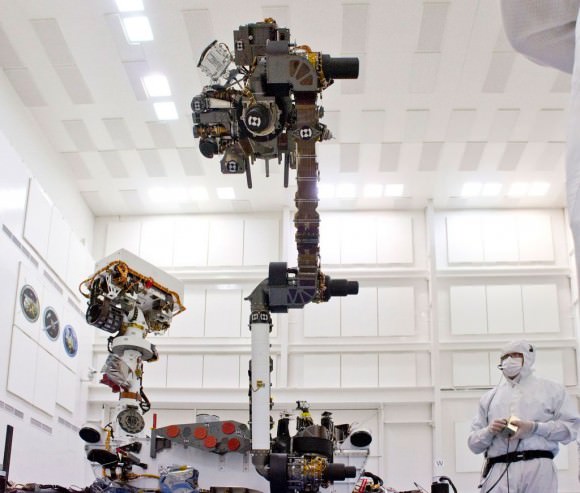
Curiosity is following in the footsteps of the legendary Spirit and Opportunity rovers which landed on opposite side of Mars in 2004.
“The rover and descent stage will be delivered to the Payload Hazardous Servicing Facility at the Kennedy Space Center (KSC) later in June,” Guy Webster, public affairs officer at JPL, told me. An Air Force C-17 transport plane has already delivered the heat shield, back shell and cruise stage on May 12, 2011.
“The testing remaining in California is with engineering models and many operational readiness tests,” Webster elaborated. “Lots of testing remains to be done on the flight system at KSC, including checkouts after shipping, a system test, a fit check with the RTG, tests during final stacking.”
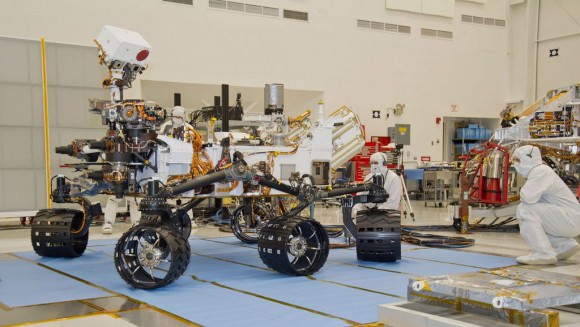
The three meter long rover will explore new terrain that will hopefully provide clues as to whether Mars harbored environmental conditions that may have been favorable to the formation of microbial life beyond Earth and preserved evidence of whether left ever existed in the past and continued through dramatic alterations in Mars history.
NASA is evaluating a list of four potential landing sites that will offer the highest science return and the best chance of finding a potentially habitable zone in a previously unexplored site on the red planet.
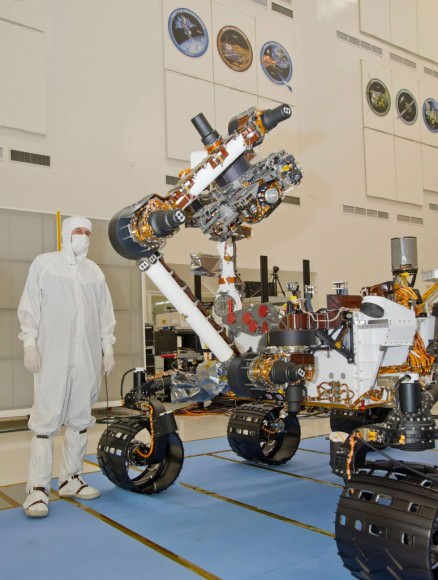
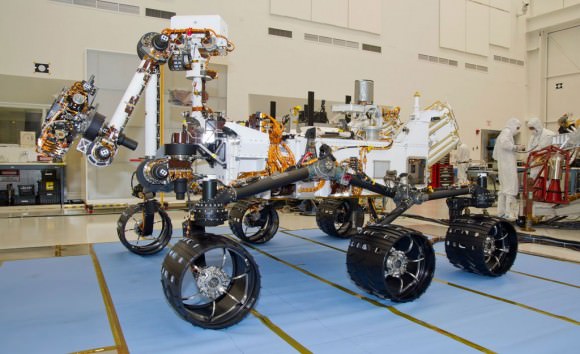
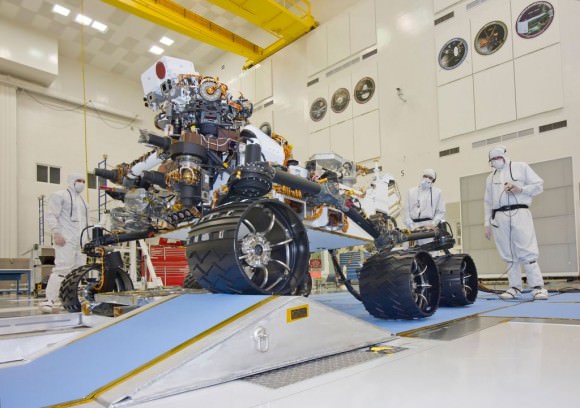
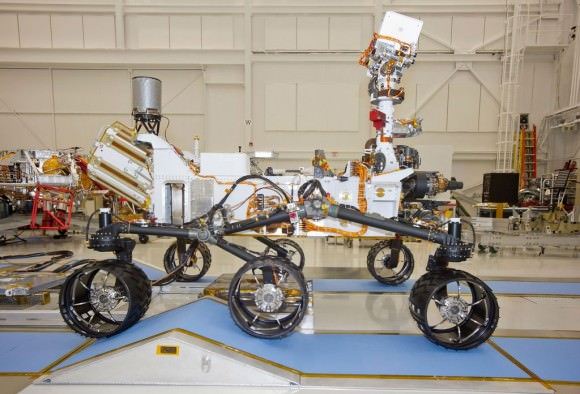

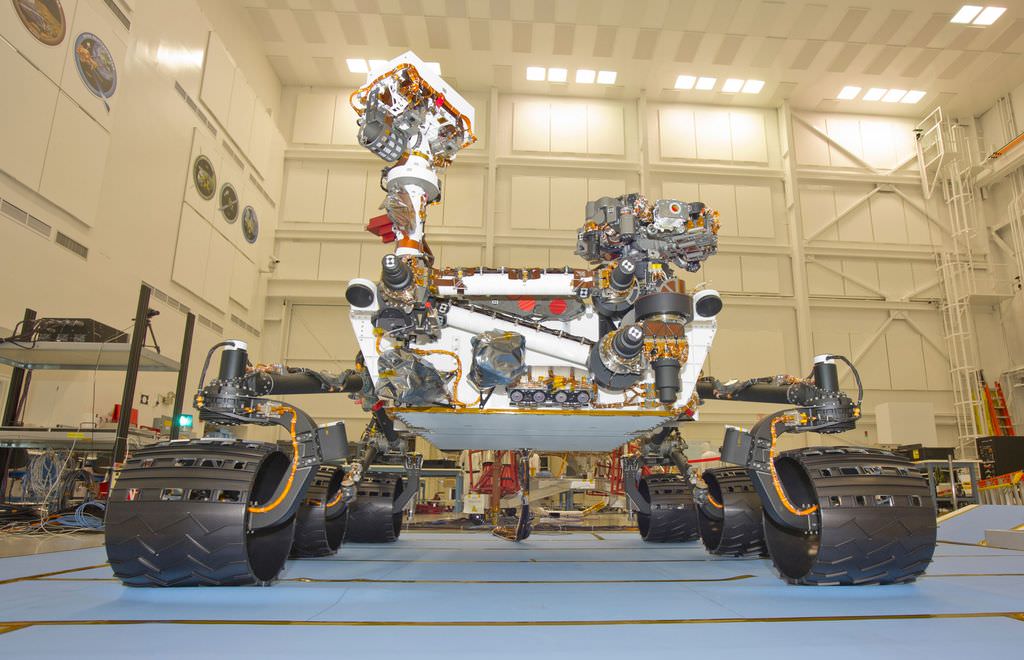
Well, this rover is supposed to last 14 years
(http://en.wikipedia.org/wiki/Mars_Science_Laboratory#Power_source)
If it outlasts its planned lifetime the same way Opportunity has, it will far outlive all of us!
🙂
Not 14 years.
It’s on the link you added: “will be expected to operate for at least 1 Martian year (668 Martian sols/686 Earth days)”
It’s the power source that is able to last 14 years.
The critical thing is the landing, which is pretty complicated. I am reminded of Jonathan Swift’s Gulliver being told on Laputia how they were building a house from the roof down. The landing scheme almost has that feeling. I presume some fully rocket fired testing of this has been performed.
I have similar concerns with the James Web Telescope, which like an origami puzzle unfolds in a very baroque fashion. Any snag in that process will bring complete failure. The success of both of these missions could pave the future road, but failures might also pose difficulties for future space science.
LC
We should peel off $100 billion from the annual military budget, give it to NASA and to private industry, and then permit NASA to build two of every mission in addition to adding missions.
People ignore the fact that we live in a Universe. They think human civilization is all there is.
Actually the powers which run things care little about civilization. The people who really run the political system are those with big money. They support the two parties in proportion to their immediate interests. Obama got twice the corporate campaign funding that McCain got. The reason is because Obama was more likely to carry forwards with the financial bailouts. The Democrats tend to be Keynesian, and in today’s world that mean welfare for corporations and financial institutions. Now that their butts have been hauled out of the fire they want to go back to business as usual with the Republicans. That is how it goes, the mega-wealthy, banks and corporations love to drink whiskey with the Republicans when things are good, but the run behind the skirts of the Democrats after they screw things up. Our government is basically a tax-deficit funded ATM machine for those who have the most economic power.
The ultimate interest is to place the world economy into the hands of private power, primarily under the control of the global mega-banks and corporations. Of course the politicos and flee-bag right winged politicians sing a mantra to convince the average person and small business owners they will have more financial freedom in a more deregulated environment. However, the ones who will really stoke away the money bags are those who have a lot already. What is going on is the grandest looting operation in history. Once Obama is out of office, 2012 or 2016, this process will be shifted into much higher gear.
NASA’s budget is pretty crimped. NASA has abandoned the LISA program. The manned space program is moribund now. If the NASA budget could be expanded enormously I would not have quite the negative stance on astronauts in space. Even still I find that to be very expensive and rather low on results. It would be great if astrophysics programs could be rejuvenated. We are facing a black wall after this decade.
LC
You paint a very bleak picture, LC, but unfortunately, I must agree with you. $100B would be a spit in the bucket compared to what the Corporate megagopoly and crooked Wall Street firms take from us every year. I see little hope for the future of manned space exploration. The best we can hope for are more projects like Opportunity. I hope we don’t see an operational problem with the JWST, as I look forward to its deployment.
It comes down to an answer to a question, “What do those who have the most want the most?” Answer: Everything. They also have the power to make it so.
This country’s future with space science looks to be heading for a cliff off in another 10 years. The private stuff which looks reasonable is the Space-X Falcon rockets. Of course that is only one step to sending instruments into space. I would sort of hate to see space become a sort of mega-buck play ground of joyrides or a Disneyland for the most wealthy.
LC
The point is that NASA and other lines of space exploration should be funded to the max, rather than dumping, say, $190 million a day in Afghanistan.
Politics aside, we could easily skim off many billions of dollars and dump it into real science, which always carries risk of failure (hence the importance of redundancy).
Moreover, as soon as Branson’s VG has an accident and burns up upon re-entry, it’s going to delay the tourist circus into space. That said, over the course of decades, as sub-orbital flight becomes safer and more vehicles are mass-produced, costs will decline and make near-space flight affordable.
The only way SS2 can heat to burn during sub-orbital reentry is if it doesn’t feather. The feathered system is pneumatically activated, like a wing or wheel control. (And I bet it has redundant systems, like wings.)
How many planes land with their wheels up? Not many.
Space probes have always been haywire affairs like that it seems; unfolding antennas, solar panels, et cetera. But, you know, it worked last time… (O.o)
WOW what an awesome looking monster, i really hope they get it safefully landed on Mars =))